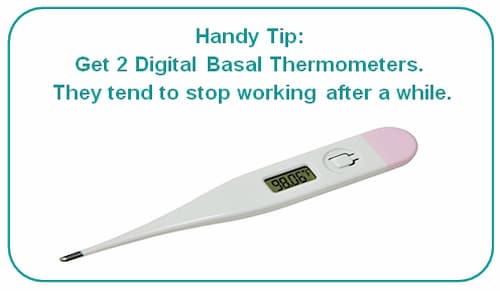Cervical Mucus
When you’re trying to conceive, it’s very important to have the right amounts of cervical mucus. And that mucus needs to be the right consistency.
Cervical mucus can either deter sperm from fertilizing an egg or nourish and protect them as they travel through your reproductive tract on their way to meeting up with an egg.
If you’ve ever visited a fertility forum or message board, then you may have seen the following abbreviations and wondered what they mean.
TTC
CM
EWCM
FQCM
What is Cervical Mucus?
Your estrogen hormone stimulates the production of cervical mucus. It’s a fluid that is secreted by your cervix. During your menstrual cycle, your cervix secretes different amounts and different qualities of cervical mucus. If you observe these changes throughout your cycle, you can begin to see the days when you will be your most fertile.
The Important Role that Cervical Mucus plays in Ovulation
As you get nearer to the time of ovulation…
Ovulation – Each month (more or less) an egg will become mature. It is then released by your ovary, goes into your fallopian tube and travels towards any sperm that may be waiting to fertilize it so that it can implant in the wall of your uterus.
At this point levels of the hormone estrogen start to rise rapidly. This triggers your cervix to secrete a burst of cervical mucus. Some people call this ovulation mucus.
Egg White Mucus
This CM has the perfect texture and pH balance to protect sperm.
If your CM is plentiful and of the right consistency during your most fertile time, it will greatly improve your chances of becoming pregnant.
So if you can tell when your cervix is producing egg white quality mucus, you can more easily identify when you are at your most fertile.
3 Steps to Identifying and Keeping a Record of Changes to your Cervical Mucus
Step One – Obtain Your CM
There are two easy methods.
Method 1 – wash your hands and then put your longest finger into your vagina. You need to get as close to your cervix as you can.
Or
Method 2 – if you see cervical mucus when you’ve used toilet paper, take some of the mucus from there.
When you have found the method that is best for you, repeat it each day.
Step Two – Observe the CM
Once you have a small amount of CM, roll it between your thumb and forefinger and then gently pull them apart from each other.
Step Three – Record Your Findings
You can do this in a diary, on a specially designed chart or on a phone app.
What You May Observe
The Most Common Changes to Cervical Mucus Throughout a Typical 28 Day Cycle.
Your cycle may be longer or shorter than this as every woman is different.
Days 1-5: Your period.
Days 6-9: When your Period has Ended
This is when your cervix secretes the least CM. Your vagina may even feel dry right now. Over the next few days…
• The amount of mucus will increase
• It will be white, cloudy or pale yellow
• It will feel sticky
Days 10-12: As you Get Closer to Ovulating
• Your CM will increase.
• It will initially be more moist, thick and sticky and become thinner as the days go by.
• It may be the color of cream
Days 13-15: The Few Days Prior to Ovulating
• Mucus becomes thin, slippery, stretchy, and clear, similar to the consistency of egg whites. This is the most fertile stage.
• You should have the highest amount of CM now
• It should be in its egg white phase
* It can also be watery. This is not quite as ideal as egg white, but it is still fertile and the sperm can easily move toward the egg.
Days 16-21: Just After Ovulation
• The quantity of CM will start to diminish
• It will become thicker and stickier.
Days 22-28:
Your CM will diminish to the point where your vagina may feel dry.
Why Cervical Mucus Changes During Your Cycle
When your uterus is ready, the CM becomes as helpful as it can to facilitate conception.
What if My Cervical Mucus isn’t Like That?
Or
Instead of it being thin and stretchy, it is thick and sticky.
If you have either of these results, it could mean that this month you may find it difficult to conceive.
Causes of ‘Hostile’ Cervical Mucus
This may be caused by many factors, including
• Stress
• An issue with your hormones
• Diet
• Prescription medications such as Clomid
Please note that if you have just come off of birth control your cervical mucus may be very low, you may feel dry.
It can take a long time for the body to naturally recover the CM, however the right herbal nutrition can make a big difference quickly.
We know how to stop your cervical mucus from being hostile.
Read Jeanette’s Testimonial of how we helped her – we can help you too.
No More Creams for Sex – More Sexual Fluids!
I am not including my picture for obvious reasons. I am 63 and look and feel so great.
Life was good. My husband and I still had a normal sex life, but for me it was not comfortable. I was dry, and the lubricants were not very helpful. They wore off.
Then a friend of mine whispered to me that she had found the most amazing products, and she was feeling like a woman again.
I called Radiant Wonder and talked with one of the herbalists. She not only introduced me to to Women’s Sexual Vitality, but also suggested that just for the first 2 months I also take Super Nourishing to bring everything back faster.
Oh my gosh it has been amazing. I have more fluids than I have had for many, many years. Even in my 40’s I was low and often dry. My husband was so surprised and delighted. It has reignited the fun of years past. Since then I have done my own whispering to other women friends and now we have a secret and ever expanding group of dedicated Sexual Vitality friends.
Don’t hesitate to try. It actually works. And once your fluids are back you cut back to one product and it stays back.
Charting Your Fertility
This can be very helpful in determining the best time for you to try and conceive. In addition to cervical mucus changes, it is usual to chart your basal body temperature (BBT).
What is Basal Body Temperature?
It’s your lowest body temperature in a 24-hour period. To get the most accurate reading, it’s important to take your temperature as soon as you wake up in the morning.
Tips for Taking Your BBT
You will need a special thermometer that can measure by tenths of degrees.
Start by taking your temperature on the first day of your next period. You can take it however you prefer – orally, rectally or via your vagina. Don’t switch between methods as this could give confusing readings.
For optimum results, your BBT should be taken after 3 hours of uninterrupted sleep. If you didn’t get that, take your temperature anyway and note it down on your chart.
As previously mentioned, it’s important to take your temperature *as soon as you wake up in the morning.
*Don’t stress about this on the weekends – just make sure that you do take your BBT to keep the data complete.
Important – Before you take your BBT…
…remember that you’re measuring your temperature with a highly sensitive thermometer. So before you take your BBT, don’t do anything that could elevate your temperature.
So don’t…
• Move around
• Drink
• Eat
• smoke
Record your daily temperature on your chart.
There will be times when you get an unusual reading which may be high or low and don’t fit with the overall pattern. This can happen and as long as it isn’t happening too frequently, don’t worry.
Remember that charting your temperature every day will start to show you a pattern. This also applies to your cervical mucus. It’s not so much the daily temp and CM but the overall pattern which will emerge.
NOTE: Although charting your BBT is a commonly used technique, it doesn’t work for everyone. You may not see a clear pattern emerging. Also, because ovulation may occur at different time in your cycle from month to month, your chart may not be an effective tool for predicting your ovulation time.
What You Are Looking For
Don’t forget that these are numbers based on average statistics. Every woman is different so don’t worry if your pattern is slightly different. Use your BBT is to find your own pattern.
Before you ovulate
your BBT is usually around 97.0 to 97.5 degrees Fahrenheit.
During ovulation
your body releases the hormone progesterone. This usually means that your temperature may go up by around 0.5 of a degree one or two days after your have ovulated.
The time before your next cycle starts
Your temperature will usually stay at that elevation. If you become pregnant during that cycle, your temperature will continue to stay elevated.
A difference of a tenth of a degree doesn’t sound much but it does count.
Bear in mind that the change in temperature occurs after you have ovulated. This means that once you see that rise, you may have missed your chance to benefit from your most fertile time.
This is why it’s important to chart your BBT for a few cycles so that you can start to see a pattern that will help you to predict your most fertile time.
Tips to Help You to Improve Your Fertility
Phase 1 – Menstruation
The Main Aim Of This Phase is to Move Blood
Preparation for a Whole New Cycle
The First Phase Begins On The First Day Of Your Period.
Even if you only menstruate for 1 to 3 days, this first week is your first phase.
During this phase, you move blood by shedding the lining of your uterus. To do this, your energy needs to be flowing properly and in the right direction. Because this is a delicate phase, you should get as much rest as possible to support your body in its endeavours.
If you don’t rest enough, your body may not have the energy it needs to successfully shed the lining. This can lead to old blood not being expelled properly.Its important to rest during the first phase of your cycle
Your pituitary gland starts to make Follicle Stimulating Hormone (FSH) and Luteinizing Hormone (LH) which stimulate the growth of new follicles (eggs).
To help this process, stay well hydrated and if you feel particularly low, take an electrolyte drink. The ones made to rehydrate babies are rich in electrolytes and work very fast.
If you have any cravings at this time, your body is telling you what it needs. A craving for red meat cold mean that you are low in iron.
Try to avoid eating foods that are heavy and greasy as these are hard to digest which means your body has to expend energy to deal with them.
While you are menstruating, avoid expending energy on exercise apart from gentle stretches and walking.
Phase 2 – Follicular Phase
The main aim of this phase is to build energy and blood.
The second phase starts around 1 week after your period starts.
You stay in phase 2 until you ovulate. During this phase, your body has finished losing blood, and so it needs to build blood and other fluids back up. This is necessary to nourish the lining of your uterus so that it can successfully implant an egg.
Sleep is always important, but during this phase it should be a priority. Try not to go to bed any later than 11pm.
According to TCM, this is the time when your body is best at rebuilding lost blood, sexual fluids and healing bodily tissues. If you go to bed too late to have good quality sleep, it hinders these restorative functions.
Lack of sleep can be detrimental to having a healthy womb lining and good quality eggs.
To support your body at this time, try to eat nourishing food such as vegetables that are rich in iron. Protein in the form of beans, fish, eggs and meat will also be helpful. You may return to more vigorous exercise during this phase, but try to avoid anything that makes you sweat a lot, especially in the evening. You need to hold onto your fluids, not burn them up.
Just be sensible. Don’t train for the marathon right now and don’t exercise intensely at night.
Intense exercise is fine in the morning, not in the evening.
Phase 3- Ovulation
The Main Aim of this Phase is to Support the Warmth and Energy of your body.
Phase 3 begins with ovulation and lasts for one week following ovulation.
This phase starts when the blood and fluids in your body have been fully restored. During this phase, your body releases a surge of Luteinizing Hormone (LH) which warms up your body.
This triggers your follicle to release the egg. You can see this when your BBT rises after you have ovulated.
In Chinese Medicine, we see that the warmth helps dilation and also helps your blood to flow. Once this has been accomplished, your egg is released from the follicle and can easily make its way through your fallopian tubes.
To help your body, keep warm. Pay particular attention to your abdomen, feet and lower back. Women in Asia often wear a Belly Warmer (Haramaki) to keep their abdomens warm. Gentle stretches can also help to promote your blood flow.
This area of the body, both front and back is the home of your deepest energy, the adrenal system, the reproductive system, even the digestive system. When it is warm and secure, you feel warm and secure. It makes a big difference to your body and can speed your healing. Get a belly warmer that is a soft thin wool, pull it up under your clothes and go about your day.
- Cold foods
- Uncooked vegetables
- Excess sugar
- Excess dairy products
The last two may cause congestion, which can lead to fluid building up in your reproductive system. This would make it harder for sperm to get to your egg and also for a fertilized egg to complete its journey through your tubes to your uterus.
Phase 4 – Luteal
This is the implantation or premenstrual phase. The main aim of this phase is to promote energy (if you are in the implantation phase) or regulate the flow of energy (if you are in the premenstrual phase). This phase begins about 1 week after you have ovulated. It ends on the day that you start to menstruate or confirm that you are pregnant (using the first day of your missed period). During this phase, the outer shell (called the corpus luteum) of the dominant follicle that released an egg, starts to secrete the hormone progesterone. This changes the lining of your uterus.
These activities cause your BBT to remain elevated. It will drop back down just before you menstruate. This is another warm phase. If an egg was implanted, then warmth and your blood flow are still the highest priority. If you didn’t become pregnant, your body will be using energy to adjust your hormones and shed the lining of your uterus. If this energy becomes stuck or isn’t flowing easily, it can give you the typical PMS symptoms of feeling moody and bloated and having headaches.
During this phase, it is very important to be under as little stress as possible. This is because stress can hinder the easy flow of energy which would make your PMS worse. Try to avoid nicotine, alcohol and caffeine. Reach for peppermint tea instead. It’s great for relieving the symptoms of PMS. Gentle exercise and stretches are also good for promoting good energy.




